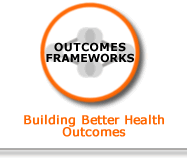Glossary for the National Parenting Strategy Outcomes Framework
The following are some of the key terms used in the models and accompanying evidence:
Attachment
this describes the bond from a child towards their parent or primarycaregiver. Attachment behaviour is the behaviour children use to gain the attention of, or to remain close to, their carer in situations when they are tired, unwell or scared.
Authoritative parenting style
This parenting style is categorised as high warmth (refers to parenting behaviours that make the child feel comfortable and approved) and high control (refers to parenting behaviours that involve respectfully placing demands and exercising control). Evidence suggests this parenting style is most likely to produce better adolescent health outcomes. [1]
Connectedness
for the purposes of this framework we use the definition provided by the World Health Organization: ‘A positive, stable, emotional bond between parents and children is an important protective factor for child health and development. Connection is made up of behaviours that convey to children that they are loved and accepted. It is a dimension of the parent–child relationship that is otherwise called warmth, affection, care, comfort, concern, nurturance, support or love. It is also important to consider the child's contribution to the bond. [2]
CYP
this term is abbrevietated and used to mean Children and Young People.
Dimensions of parenting
The World Health Organization (WHO) categorisedparents’ roles into the following five dimensions [2] :
- Connection: Behaviours that convey to adolescents that they are loved and accepted.
- Behaviour control: Parents’ actions aimed at shaping or restricting adolescents’ behaviours.
- Respect for individuality: Allowing the adolescent to develop a healthy sense of self, apart from his or her parents
- Modelling: Parents become role models – their behaviours and attitudes providing examples of how to behave.
- Provision: Efforts by parents to seek out relationships and opportunities within the community that can supplement what the family is able to provide.
Evidence-informed
The Evidence for Action team of NHS Health Scotland informs decision-making by providing effectiveness evidence, advice and expertise by:
- gathering together evidence and evidence-informed recommendations relating to the effectiveness of action in key public health areas
- synthesising and communicating these pieces of information in ways that help policymakers, organisations and practitioners to develop and deliver effective action
- promoting and contributing to the further development of approaches to evidence-informed decision-making.
Family-centred helpgiving
this is characterised by practices that treat families with respect and dignity; information-sharing; family choice regarding involvement and provision of services and parent/professional collaboration and partnerships.
GIRFEC
this term is abreviated. It means Getting It Right for Every Child and it is the national cross-cutting programe which outlines an approach to working with children and families in Scotland. More information available from : www.scotland.gov.uk/Topics/People/Young-People/childrensservices/girfec
Health inequalities
these are the unfair differences in health within the population across social classes and between different population groups. [3] These unfair differences are not random but largely socially determined, and they are not inevitable.
Holistic development of CYP
for the purposes of this framework this includes social, emotional, cognitive, educational and physical development.
Parents
for the purposes of this outcomes framework the term 'parents' is intended to include all those individuals and agencies in a parenting role. For instance, this may include birth parents, parents of looked after children, adoptive parents, foster parents, carers, kinship carers, and corporate parents.
Social and emotional competence of CYP
We include the assets empathy resilience, self-efficacy, self-worth and self-awareness.
References
McAteer J, Jepson R, Wight D, Jackson C. Characteristics of effective and ineffective adolescent health interventions with a parental component. Scottish Collaboration for Public Health Research and Policy, University of Edinburgh and MRC Social and Public Health Sciences Unit, University of Glasgow.Available from: http://www.scphrp.ac.uk/characteristics-of-effective-ineffective-adolescent-health-interventions-with-a-parental-component/
World Health Organization. Helping parents in developing countries improve adolescent health. 2007. Available from: www.who.int/maternal_child_adolescent/documents/9789241595841/en/
-
Beeston C, McCartney G, Ford J, Wimbush E, Beck S, MacDonald W, and Fraser A. Health Inequalities Policy Review for the Scottish Ministerial Task Force on Health Inequalities. NHS Health Scotland. Edinburgh. Available from: www.healthscotland.com/documents/23047.aspx

